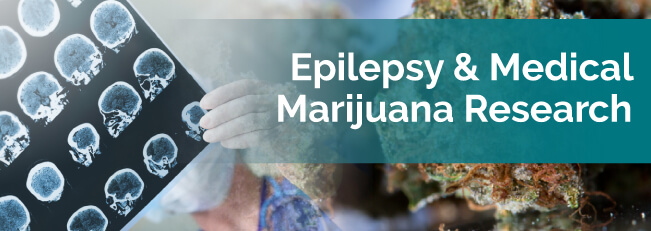
Epilepsy causes convulsions and loss of consciousness by affecting your central nervous system. It causes a wide variety of seizures, and the types and frequency of seizures vary from patient to patient.
Medical marijuana works as an alternative to seizure medications for folks with epilepsy. Find out what three major studies have discovered about the subject.
One of the main components of marijuana, cannabidiol (CBD), has shown great promise for treating seizures and epilepsy. Since CBD doesn’t make the user feel high, it suits all sorts of patients’ lifestyles. In fact, many cannabis medications created to treat seizures focus on helping children with epilepsy.
Devinsky et al. explored the possibility of using CBD for patients with treatment-resistant epilepsy. Although lots of folks want to know about marijuana’s effect on epilepsy, not many scientists have researched it. So, the team wanted to get data on the safety and efficacy of cannabis as a supplement to standard epilepsy treatment.
A total of 214 patients between the ages of 1 and 30 years old who have participated in the trial. They took a dose of CBD every day for 12 weeks, slowly building up to the highest dose they could take. The team recorded the patients’ seizure frequency and side effects.
CBD successfully reduced the frequency of seizures for the study participants. The number of seizures that the patients experienced every month decreased by a median of 36.5%. Also, while they had a median of 30 seizures per month before the study, they only experienced an average of 16 seizures after 12 weeks of taking CBD.
A few years after the previous study, Devinsky et al. conducted a double-blind, placebo-controlled study on CBD’s effect on treatment-resistant epilepsy. After seeing promise in their earlier data, they wanted to obtain evidence collected in one of the most intensive research environments possible. Specifically, they aimed to study epilepsy in children and young adults.
They studied 120 children and young adults with Dravet syndrome, a type of epilepsy. Each participant received either cannabidiol or a placebo every day for 14 weeks. Devinsky’s team recorded the subjects’ seizure frequency, quality of life and side effects throughout the research period.
The patients not only experienced fewer seizures when taking CBD — 43% of the patients who received cannabidiol saw 50% or more reduction in their convulsive seizures, and 5% of the CBD group stopped having them altogether. While the CBD patients dealt with a median of 12 seizures a month at the beginning of the study, they only experienced an average of six at the end.
On behalf of GW Pharmaceuticals, Devinsky led a clinical trial of the drug Epidiolex, a form of CBD engineered for the pharmaceutical market. To help patients with epilepsy and their families, the researchers in the study wanted to engineer and test a form of CBD approved by the FDA. To get approval from the FDA, there must be evidence supporting the efficacy of the drug.
A total of 255 epilepsy patients between the ages of 2 and 55 participated in the clinical trial. One-third of them took 20mg of Epidiolex, one-third took 10mg of Epidiolex and the final third took a placebo. Similarly to Devinsky’s previous studies, the team recorded each patient’s monthly frequency of seizures throughout the trial period.
Epidiolex worked to reduce the monthly frequency of the subjects’ seizures without causing severe side effects. The 10mg group had a median of 37% fewer seizures and the 20mg group experienced a median of 42% less seizures. Also, the vast majority of patients who experienced side effects rated them mild to moderate and continued to take Epidiolex.
Looking for more resources on cannabis medicine for epilepsy treatment? Our page on marijuana and epilepsy can teach you all about epilepsy disorders and using marijuana for seizures. Then, use our search engine to find a professional, cannabis-friendly medical office near you.